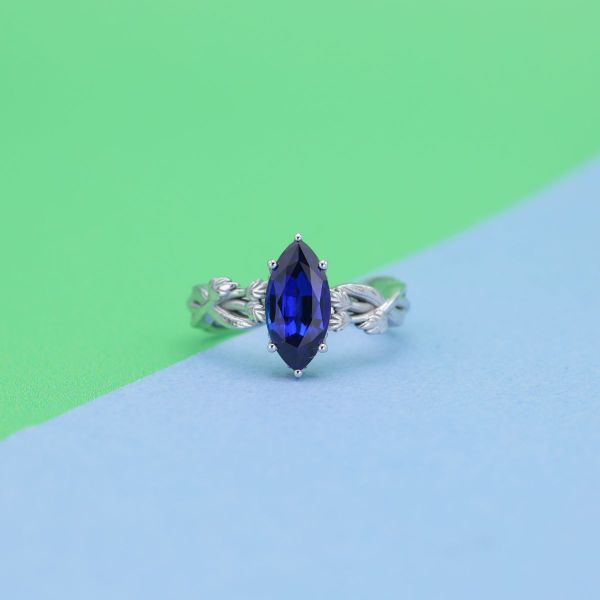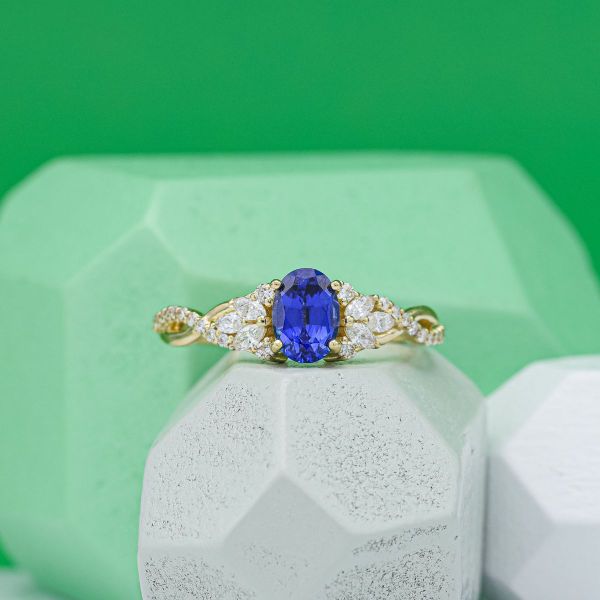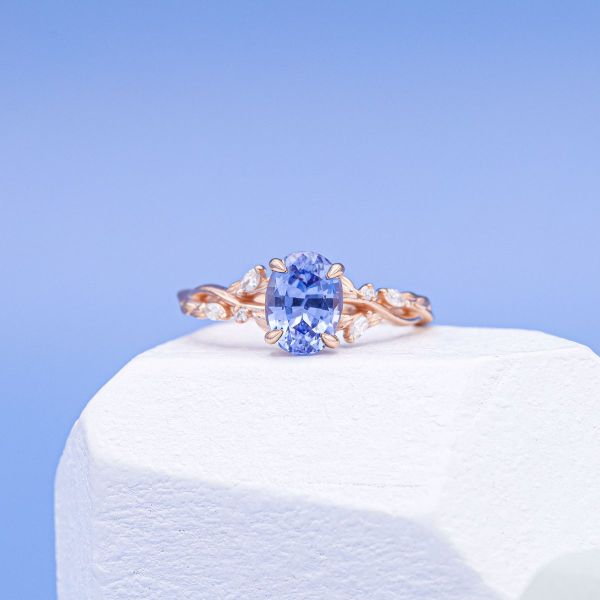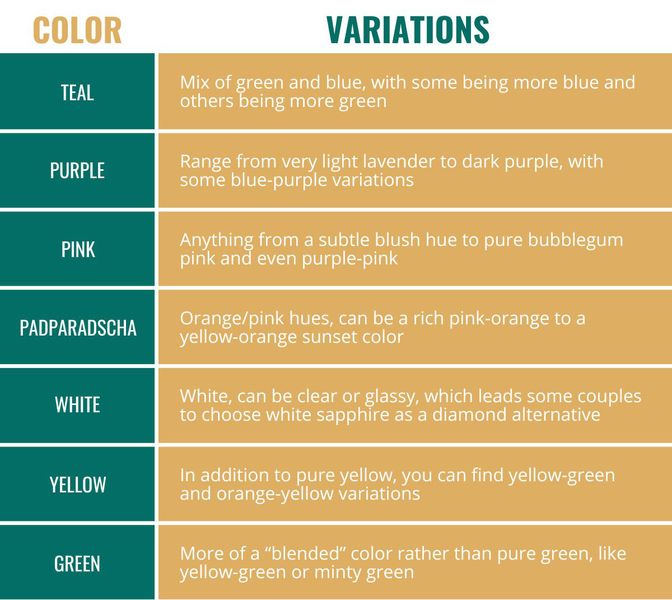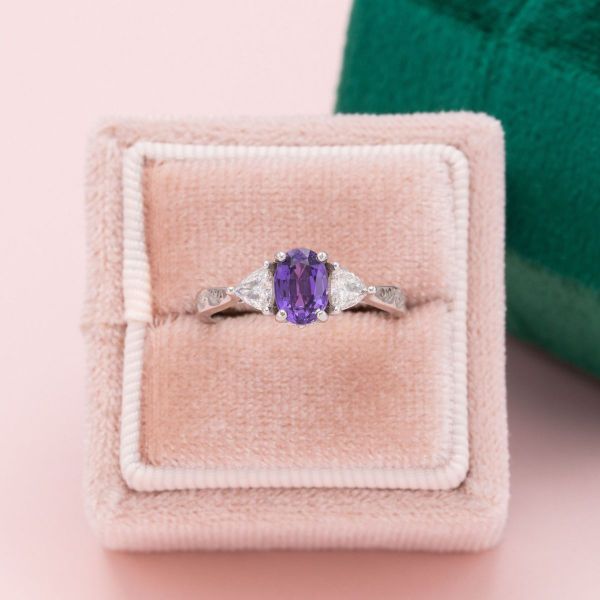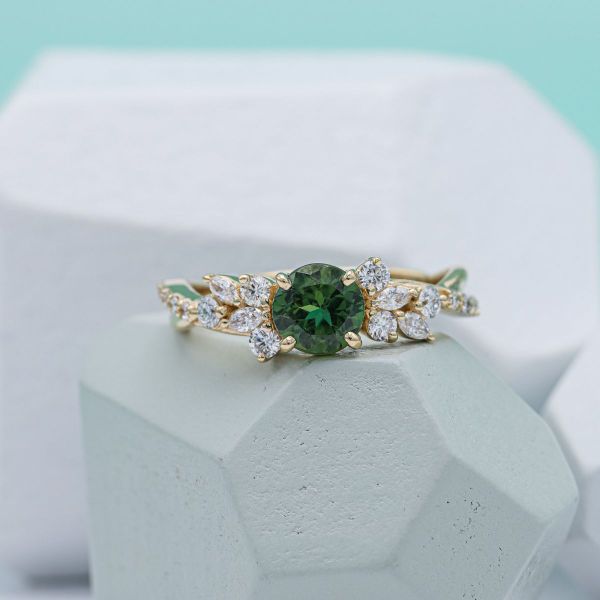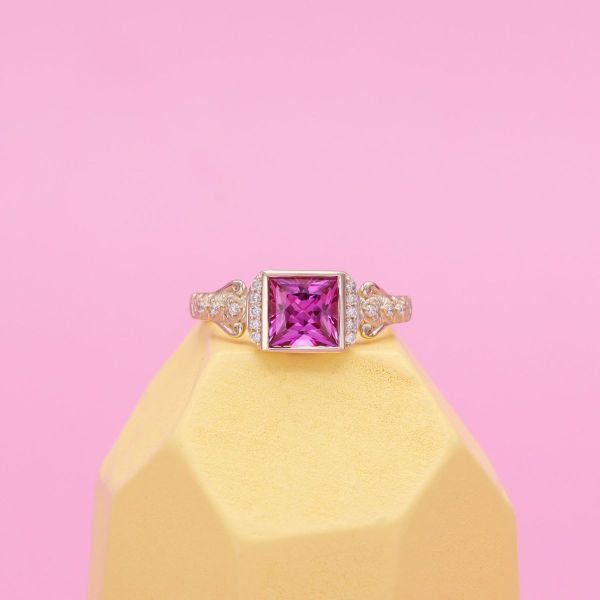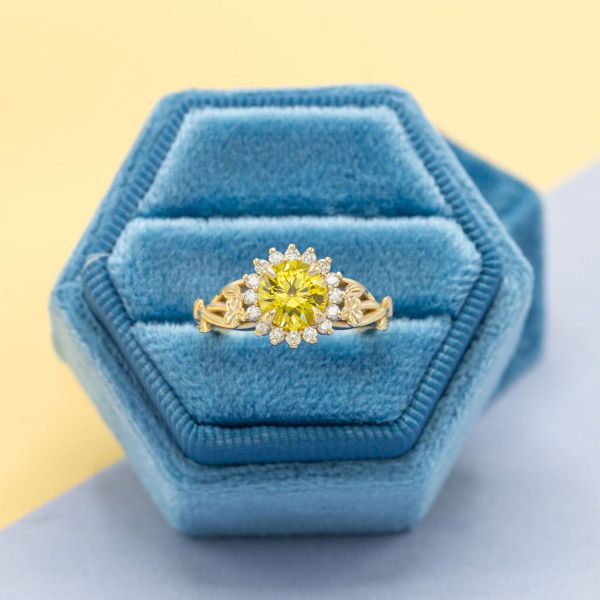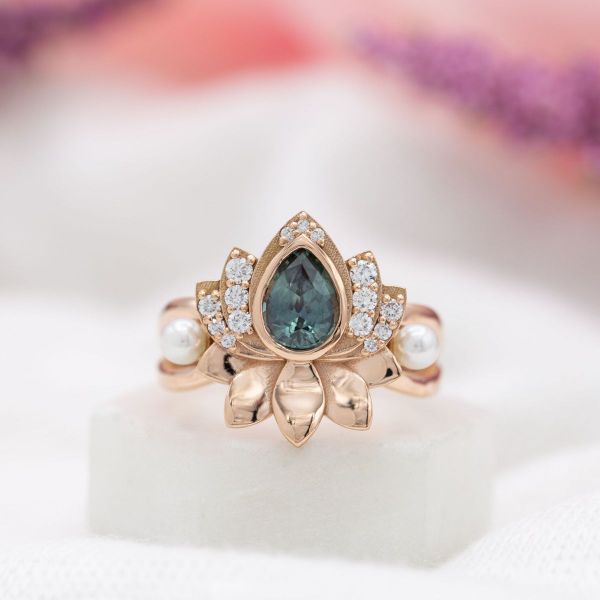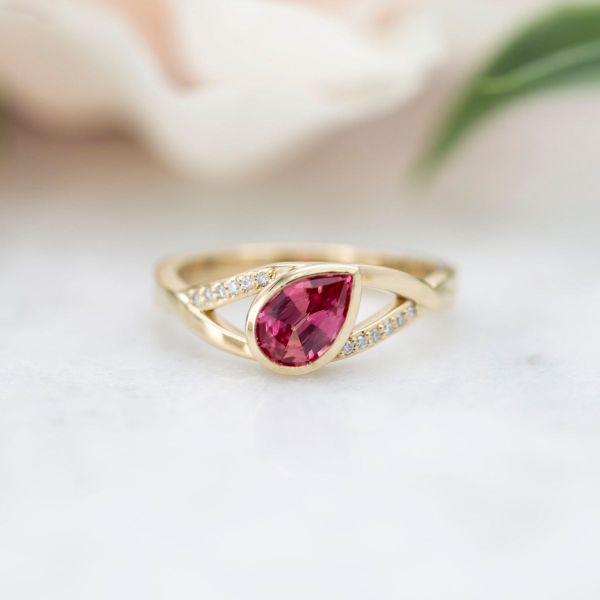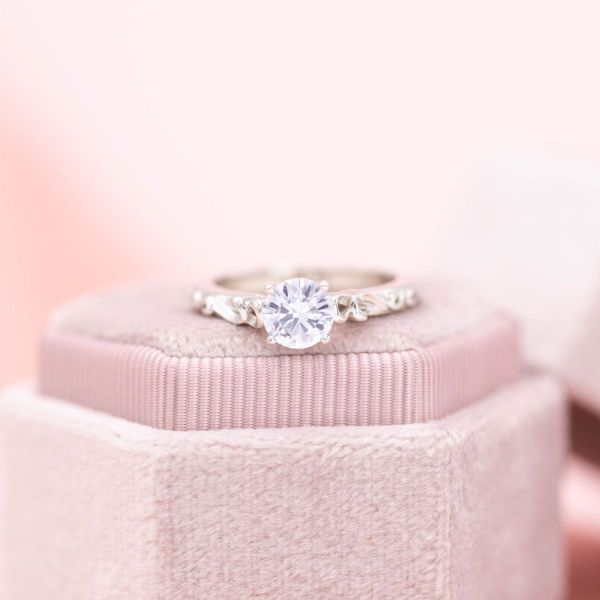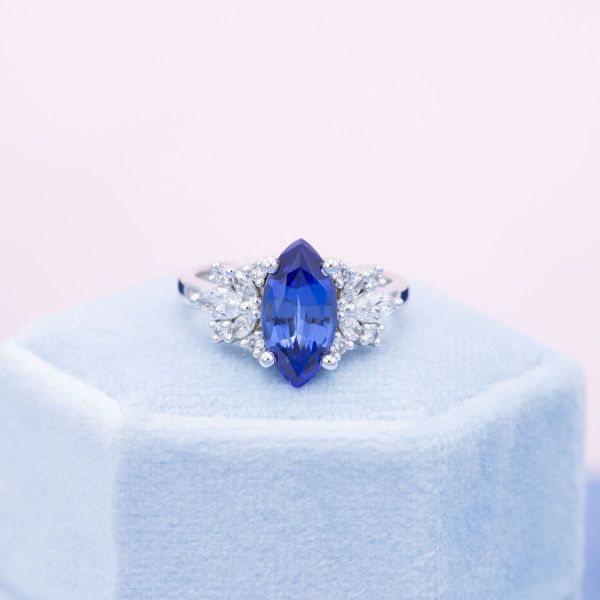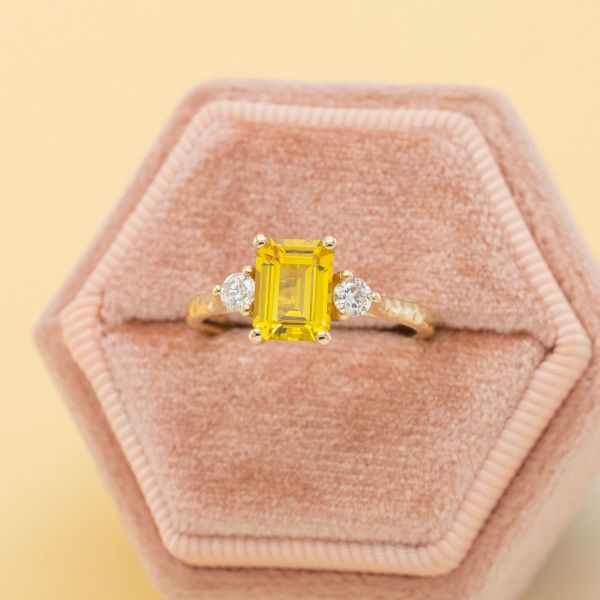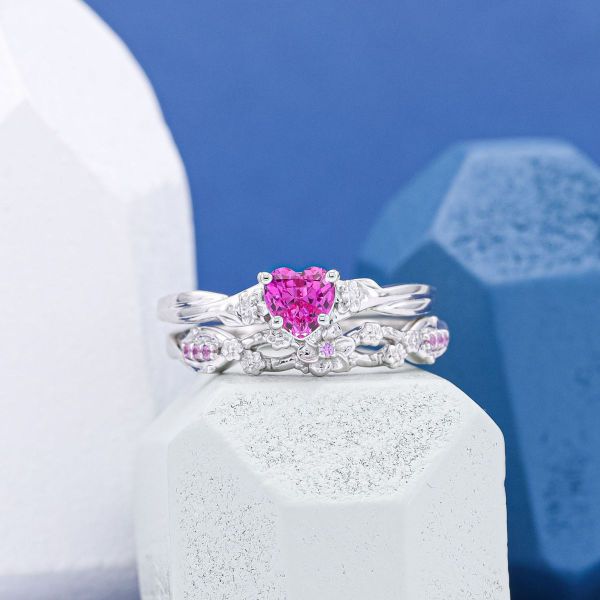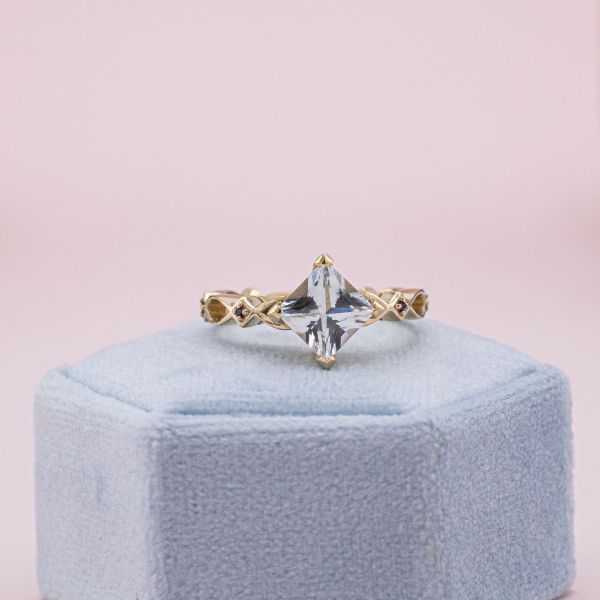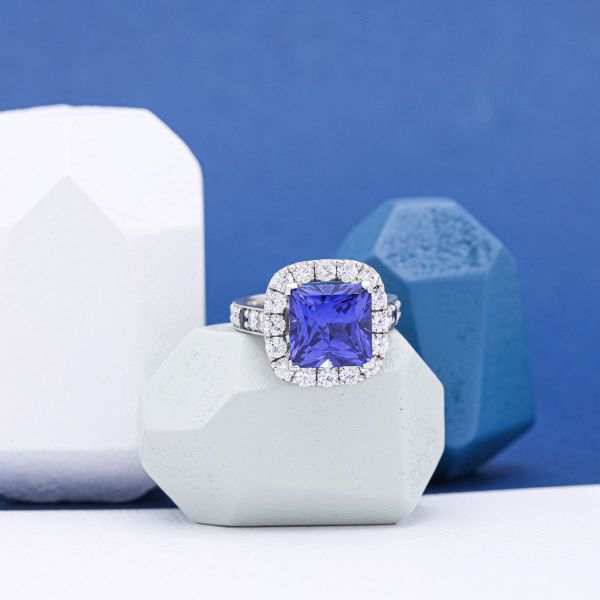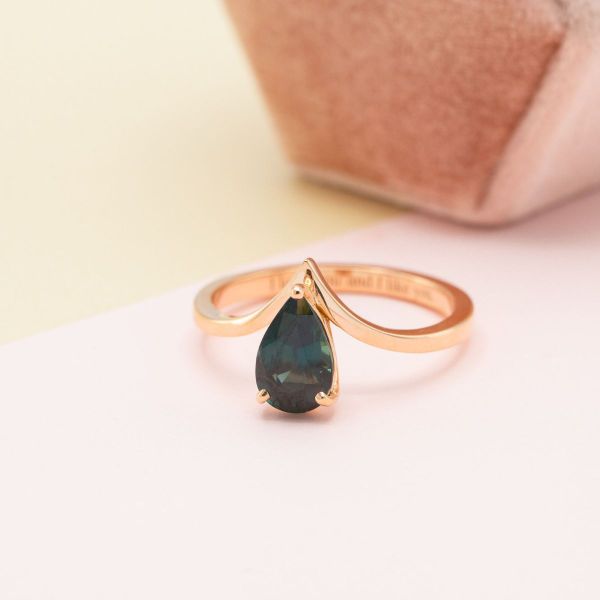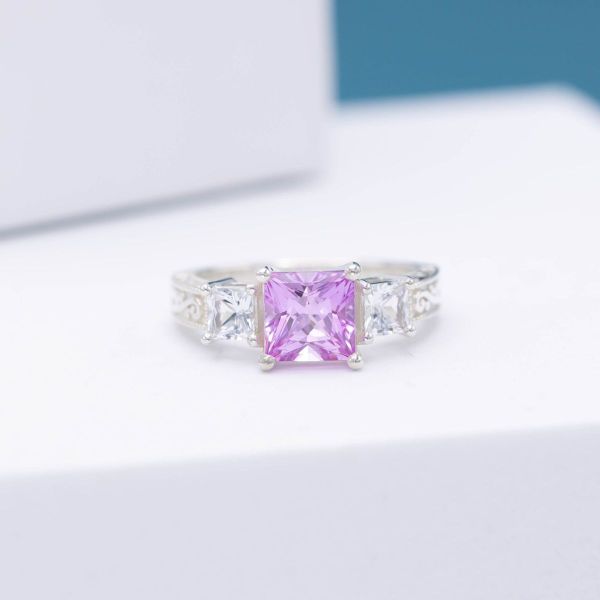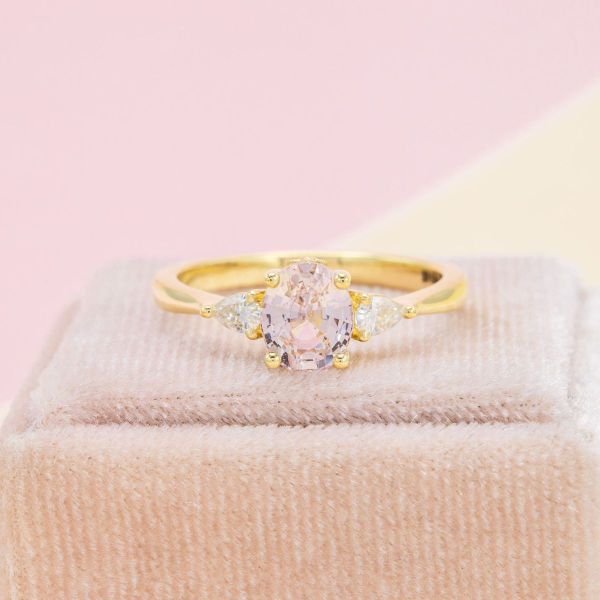Gemstone Knowledge
How to pick the perfect sapphire
Selecting the right sapphire for your engagement ring
Choosing a sapphire for your engagement ring seems like a simple process, right? It’s just a blue stone. To that we say, no way José! Sapphires can be pink, yellow, green, purple, and more–providing almost unlimited color possibilities–and picking a hue is just the tip of the iceberg. Between selecting a color, size, shape, lab or natural, setting metal, and overall engagement ring style, the options sapphires offer are endless.
Even if you already have a good idea of what color and setting style you’d like, there are still plenty of decisions to make regarding which stone best suits your needs. Let’s take a closer look at the factors involved in selecting a sapphire for your center stone.
Lab or natural?
Our couples agree: both natural and lab-created sapphires can be a great choice. From 2022 to early 2023, we sold ~55% natural sapphires and ~45% lab-created sapphires!
One of the first things you should consider is whether you’d like a lab or natural sapphire. The difference is pretty straightforward: lab sapphires are created in a controlled lab environment, whereas natural sapphires form over millions of years in Earth’s crust! We’ve gone into detail of the similarities and differences between these two types of sapphires in our lab vs. natural sapphire guide, but here’s a quick roundup of things to keep in mind as you mull over your decision:
- Lab sapphires are genuine sapphires, meaning both lab and natural varieties rate a 9 on the Mohs scale of hardness for excellent durability and wearability.
- When it comes to color, lab sapphires are available in a small variety of the same shades you’d expect from natural stones (blue, purple, green, yellow, pink, etc.). However, lab sapphires are standardized and always come in “top color”, meaning there are limited hues to choose from. In contrast, natural sapphires come in multiple hues, tones, and saturations for more variety.
- Lab sapphires are more predictable when it comes to cost, ranging from $550 to $600 for a 1 carat stone. Natural sapphires can range from a few hundred dollars to thousands of dollars for the same size stone depending on hue, saturation, secondary color, and more.
If you’re looking for a top color stone you can count on that’s budget-friendly, a lab sapphire is a great way to get the best of both worlds. But, if you’d like some variety and don’t mind paying more for your center stone, the color options of natural sapphires are tough to beat!
Color
Color is the most important attribute when shopping for a sapphire! Why? Because sapphires come in every color but red. That’s one of the huge reasons we’re seeing sapphires grow in popularity for bridal; if you have a color in mind, odds are there will be a sapphire for it.
We mentioned that sapphires can come in any color but red, but why? Red corundum (the mineral name for sapphire) is actually called ruby. That's right! These two regal stones are siblings, and a red "sapphire" is actually a ruby.
Most couples think of the traditional blue stone when it comes to sapphires, so we’ll dig in a bit deeper to what you might want to look for in a classic blue sapphire. Traditional blue sapphires ideally have a pure-blue to violet-blue hue, which you can expect from lab sapphires as well since they’re created to be top color. This range provides a rich, vibrant blue color that’s eye-catching as a center stone, but you can always take a look at blue sapphires with unique secondary hints of green for a slight discount. These stones are less prized by the industry but beloved by many engaged couples who adore their one-of-a-kind look!
We’ve talked at length about blue sapphires, but what about all of the other colors? There’s a lot of variation among these shades, so we summed up their color in the chart below:
We have a whole article celebrating the many wonderful colors of sapphire, but here are just a few examples to whet your appetite:
Saturation and tone
Saturation, or the intensity of a sapphire’s color, can vary widely. For traditional blue sapphires, the higher the saturation, the more prized and valuable the color. Since there’s so much variation in color, though, saturation often comes down to what works best for you based on your preferences, and you may find yourself falling in love with a more pastel stone!
Similarly, sapphires can achieve any tone, which describes how open or closed a stone appears (i.e. Can you see the facets of the stone as light bounces through it? Or, is it more opaque?). On a scale of 1 to 8, sapphires can achieve any rating with many stones on the closed toned side. Sapphires can be open or closed in any color, and it's up to you to decide whether you prefer a lighter, livelier tone or a darker, opaque color.
Cut, shape, and size
Cut and shape are two important factors when looking at sapphires. Are you looking for a classic round stone, or would you rather shake it up with a trendier cut? Sapphires come in just about every shape and size, from traditional shapes like round, princess, and emerald (the shape, not the actual gemstone!) to fashionable styles like marquise, oval, and pear. That being said, round brilliants are one of the most popular choices due to their maximum sparkle.
When it comes to size, a 1 carat stone is always a great option for a balanced look, but you can find sapphires in two, three, four, and even five carats! It’s rare to find high-quality natural sapphires above five carats (and they come with a heftier price tag), so if you’re looking for something extravagant it may be easier to switch to lab sapphires. Sapphire prices increase gradually with carat size, and stone color also plays a major role in affordability (but more on that in just a minute!).
Other factors to consider
Price
Sapphires vary in price depending on their size and color, so feel free to do some mixing and matching of these criteria to find the right stone for your budget. For blue sapphires, a 1 carat mined stone with recommended color can fetch prices of $1,900 to $3,100.
In contrast, other sapphires vary in price based on their color, with 1 carat mined white sapphires coming in at $200-$700 and sunny natural Padparadscha sapphires reaching the top of the scale at $1,400-$4,000. Every other color falls somewhere in between, and stones with lively tone, vivid saturation, and no secondary color garner higher prices.
Like we mentioned earlier, lab sapphires are a great choice for more consistent pricing and guaranteed excellent color. Coming in at $500-600 for a 1 carat stone of pretty much any color variation, lab sapphires are budget-friendly and provide standardized color and appeal.
Settings and accent stones
Since sapphires come in just about every color, they can suit pretty much any setting as well! From antique designs to modern styles, sapphires look lovely as solitaires, adorned with a halo (or two), or even surrounded by delicate accent stones. Speaking of accent stones, surrounding your sapphire with smaller diamonds or other white stones is an easy way to amplify its color. Or, you can even add a few sapphires in different colors around your center stone to complement its vibrant display.
When it comes to metal choices, you can use your imagination to mix and match metal colors with varying sapphire hues to find the right combination for you. Here are a few suggestions to get you started:
- Deep, rich colors like blue, purple, and teal suit the cool tones of white gold and platinum exceptionally well.
- For brighter appeal, a yellow gold setting can really make pink, green, and yellow-orange stones pop.
- Champagne and pale pink stones bring out the best blush tones in rose gold settings.
Sapphires give you nearly unlimited possibilities when it comes to settings, so we’re sure you’ll be able to find your dream engagement ring somewhere in the mix!
Choosing your ideal sapphire
Sapphires are durable, elegant, and a smart choice for engagement rings! Whether you’re looking for a sapphire with that signature royal blue hue or something unique like a purple or pink variety, it can be helpful to look at multiple stones in your chosen color range to see which hue and saturation best fit your tastes. While lab sapphires may not offer the same range of color, you can be sure you’re getting high-quality hue and saturation when choosing these standardized stones. And don’t worry! Our team at Custommade will walk you through the many options available when it comes to sapphires, so be sure to reach out and start the hunt for your ideal sapphire!
About CustomMade
CustomMade designs and creates one-of-a-kind, custom engagement rings and fine jewelry. Each piece we create is inspired by you, designed for you, and made just for you.
